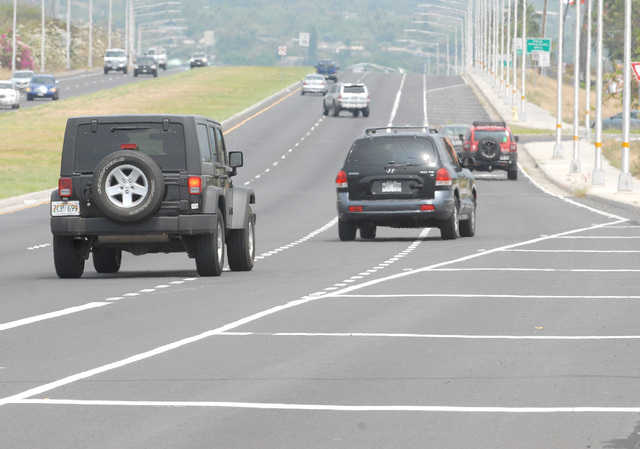Bikes to the right, please. ADVERTISING Bikes to the right, please. The state Department of Transportation and local cyclists have reached an agreement on Queen Kaahumanu Highway bike lanes that just might make everyone happy. In their second meeting with
Bikes to the right, please.
The state Department of Transportation and local cyclists have reached an agreement on Queen Kaahumanu Highway bike lanes that just might make everyone happy.
In their second meeting with a working group of county representatives, police and cyclists on Friday, transportation officials presented a plan that incorporates many of the suggestions of cyclists and other users frustrated with how bike lanes interface with traffic between Makala Boulevard and Henry Street in Kailua-Kona. Under the plan, bike lanes will be moved to the far right of traffic, except at intersections, where signage will alert motorists to be aware of the cycles.
The DOT plans to make the changes this fall.
“It was a really good meeting. I think the motorists and cyclists both will be pleased,” said Tina Clothier, executive director of Peoples Advocacy for Trails Hawaii, a cycling and pedestrian advocacy group that has been involved in the discussions.
The working group formed in response to a state House concurrent resolution sponsored by Kona Rep. Nicole Lowen calling for the group to study ways to make the bike lanes safer. The first meeting was held in May, with cycling groups floating the proposal on which the changes are being based.
“The motorists will get back their acceleration and deceleration lanes and the bikes will be all the way to the right, where everyone expects them to be,” Clothier said.
The DOT restriped the highway last fall, doing away with merge lanes and shortening exit lanes between Henry Street and Makala Boulevard — an attempt to improve safety that backfired, leaving neither cyclists nor motorists happy with the outcome. Bikes were still sandwiched between lanes of traffic and drivers lacked a way to accelerate before merging.
Lowen said she was grateful for the speed and efficiency of the group in coming up with a solution and for the DOT’s cooperation.
“I’ve heard from so many people concerned about the safety — or lack thereof — and I think this group has been able to come up with the best possible solution,” Lowen said. “It makes a difference when the DOT engineers over on Oahu take the time to listen to the people who actually use these roads every day.”





